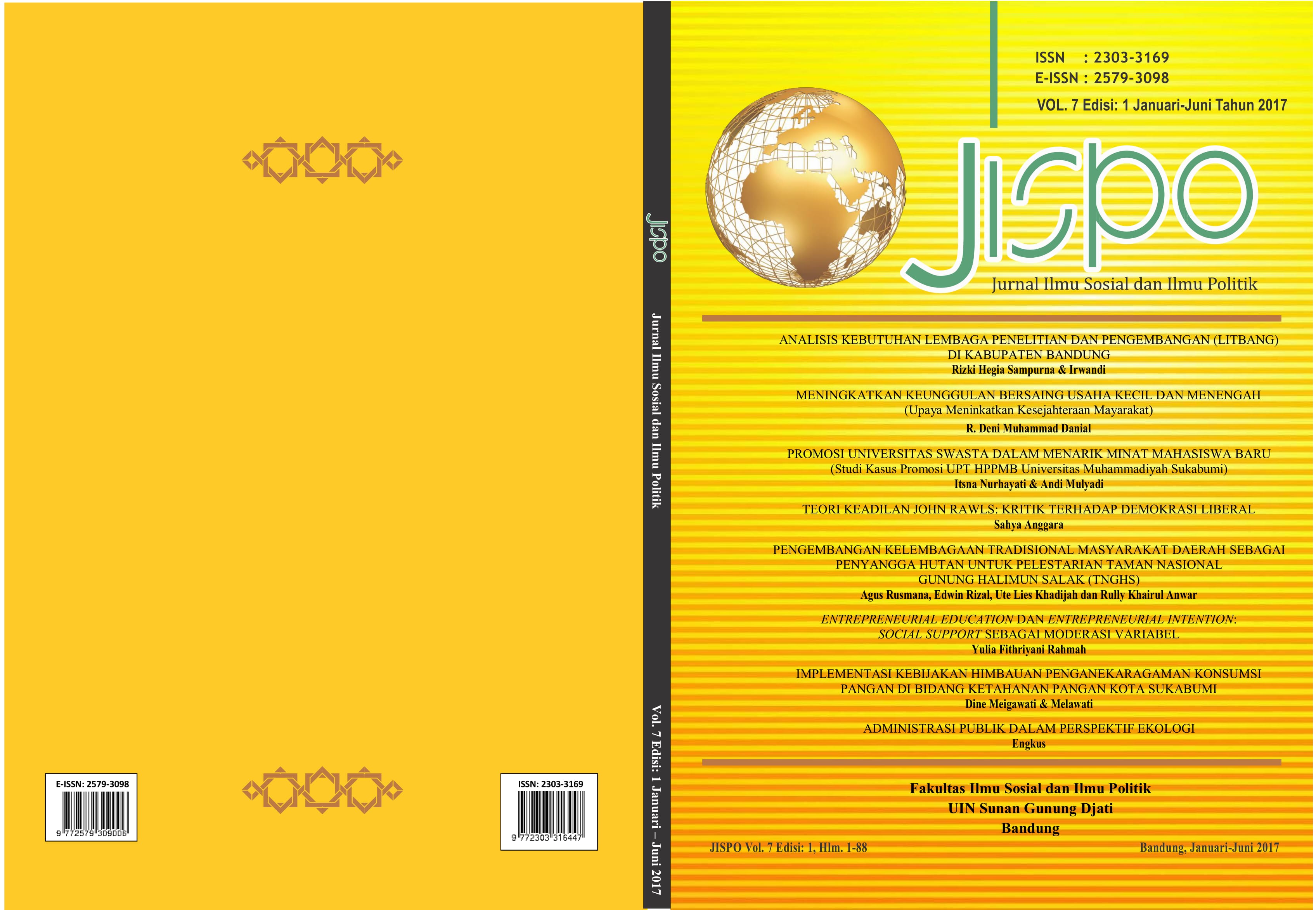MENINGKATKAN KEUNGGULAN BERSAING USAHA KECIL DAN MENENGAH (Upaya Meningkatkan Kesejahteraan Masyarakat)
DOI:
https://doi.org/10.15575/jp.v7i1.1732Keywords:
SMEs, Competitive Advantage, Rapid Response, Cost Efficiency, Differentiation, Market FocusAbstract
References
Abu Aliqah, K. M. 2012. Differentiation and Organizational Performance: Empirical Evidence from Jordanian Companies. Journal of Economics. Vol. 3, no.1.
Baines, A. & Langfield-Smith, K. 2003. Antecedents to management accounting change: a structural equation approach. Accounting, Organizations and Society.
Chenhall, R. H., and Langfield-Smith, K. M. 1998. The relationship between strategic priorities, management techniques and management accounting: An empirical investigation using a systems approach. Accounting, Organizations and Society, 23 (3). Daniel, S. J. and Reitsperger W. D. 1991. Linking Quality Strategy with Management Control Systems: Empirical Evidence from Japanese Industry. Accounting, Organizations and Society, Vol. 16, No. 7. Ferdinand, Augusty T. 2005. Structural Equation Modeling Dalam Penelitian Manajemen: Aplikasi Model-Model Rumit Dalam Penelitian Untuk Tesis S-2 Dan Disertasi S-3. Badan Penerbitan Universitas Diponegoro. Ferdinand, Augusty T. 2006. Metode Penelitian Manajemen. Edisi 2. Badan Penerbitan Universitas Diponegoro. Garvin, D.A. 1988. Managing Quality, The Free Press, New York, NY. Kotha, S. & Orne, D. 1989. Generic manufacturing strategies: A conceptual synthesis Strategic Management Journal. 10.3: 211. Matsa, D. A. 2009. Competition and Product Quality in the Supermarket Industry. http://are.berkeley.edu/docu ments/seminar/matsacompetition- 090706.pdf Morgan, N.A., Kaleka, A. and Katsikeas, C.S. 2004. Antecedents of export venture performance: A theoretical model and empirical assessment. Journal of Marketing. Vol. 68
Parasuraman, A. Valarie A. Zeithmal, and Leonard L. Berry. 1988. Servqual : A Multiple-Item Scale for Measuring Consumer Perception of Service Quality. Journal of Retailing, Vol. 64. pp 12-40. Porter, Michael E. 1990. The Competitive Advantage of Nations. London: The MacMillan Press Ltd. Porter, Michael E. 1985. Competitive Advantage: Creating and Sustaining Superior Performance. New York: The Free Press. Prahalad, C.K. and Hamel, G. 1990. The core competence of the corporation. Harvard Business Review, Vol. 68, No. 3. P. 82. Shammot, M. M. 2011. Quality Management Practices and Their Impact on Organizational Performance, and Customer Behavior. European Journal of Economics, Finance and Administrative Sciences, Issue 34. Sugiyono. 1999. Metode Penelitian Bisnis. Jakarta: Alfabeta. Syafar, A.W. 2004. “Membangun Daya Saing Daerah melalui Kompetensi Khas (Distinctive Competence) Berbasis Komoditi Unggulanâ€. Usahawan-No. 03, TH XXXIII-Maret: hlm. 3-11.
Bello, F. (2016). DIMENSI SOSIAL EKONOMI BANTUAN SISWA MISKIN DI TTS NTT. JISPO : Jurnal Ilmu Sosial Dan Ilmu Politik, 6(1), 63 - 80. doi:http://dx.doi.org/10.15575/jp.v6i1.1750
Downloads
Published
How to Cite
Issue
Section
Citation Check
License
Authors who publish their manuscripts in JISPO agree to the following terms:
- Authors retain copyright and grant the journal right of first publication with the work simultaneously licensed under a Creative Commons Attribution-ShareAlike 4.0 International License that allows others to share the work with an acknowledgment of the work's authorship and initial publication in this journal;
- Authors are able to enter into separate, additional contractual arrangements for the non-exclusive distribution of the journal's published version of the work (e.g., post it to an institutional repository or publish it in a book), with an acknowledgment of its initial publication in this journal; and
- Authors are permitted and encouraged to post their work online (e.g., in institutional repositories or on their websites) after publication process, or prior to and during the submission process, as it can lead to productive exchanges, as well as earlier and greater citation of published work (See The Effect of Open Access).




.jpg)



